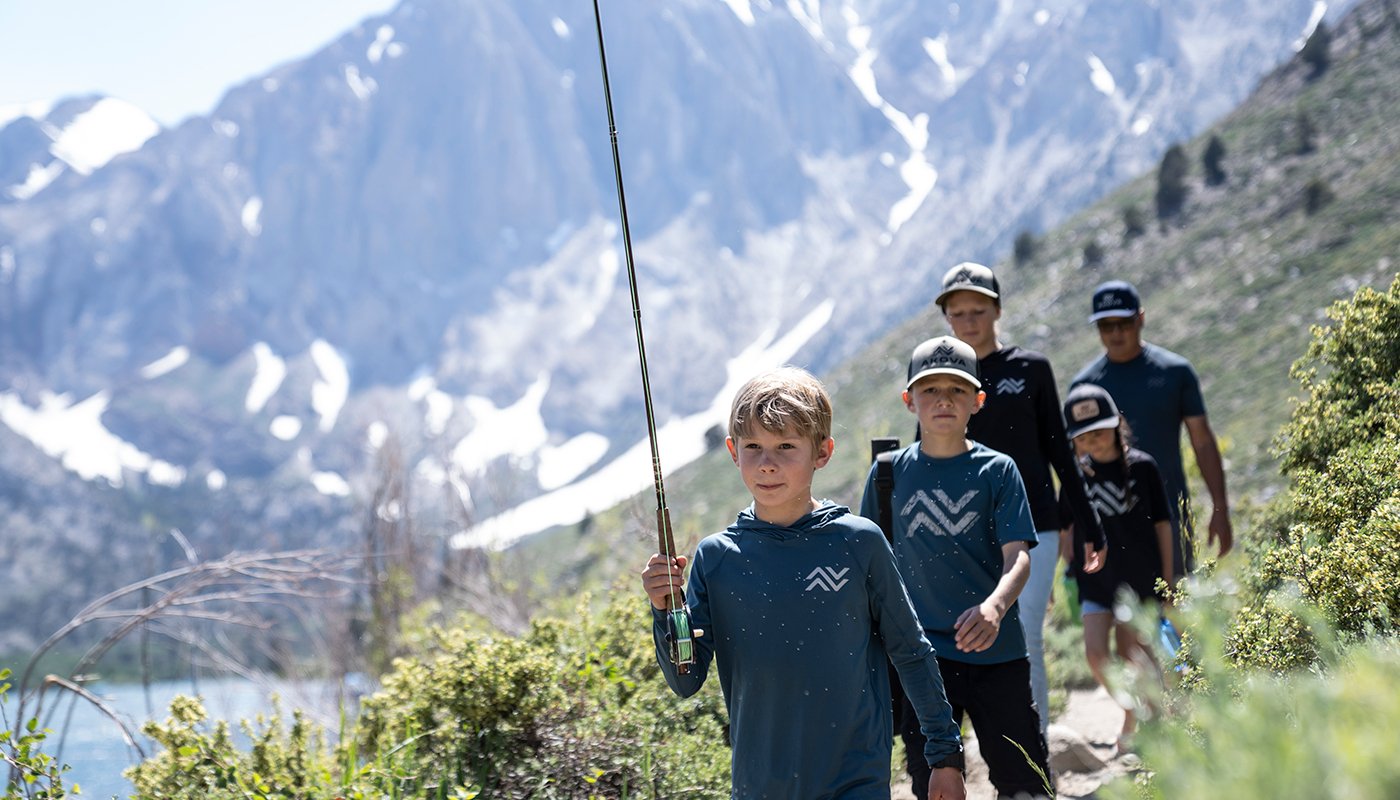When spending time outdoors, it's important to take measures to protect yourself from the sun's harmful rays. Regular clothing provides minimal sun shielding, whereas UPF-rated clothing offers a substantial boost in sun protection. Unlike sunscreen which wears off quickly, sun protective clothing ensures lasting defense for your skin for the areas it covers. By choosing UPF clothing, you can enjoy outdoor activities with peace of mind, knowing that you are well-protected.
What Does UPF Mean?
UPF stands for Ultraviolet Protection Factor, the measurement system used to indicate how much of the sun's UV radiation is blocked by clothing. SPF (Sun Protection Factor) ratings are for sunscreen and indicate the amount of protection provided against UVB rays while UPF ratings indicate the protection level against both UVA and UVB radiation in clothing. Essentially, UPF can be thought of as sun protection that you wear (and that doesn’t wash off)!
According to The Skin Cancer Foundation, a garment with a UPF rating of 15 means that 1/15th of UV rays can penetrate the fabric. A UPF of 30 means that 1/30th of the UV rays can penetrate through, and so on. UPF 15 is considered the bare minimum for sun protective clothing, and it only falls under the 'good protection' category.
On the other hand, a garment with a UPF of 50 allows merely 1/50th (around 2%) of the sun's UV radiation to reach your skin. This means it blocks 98% or more of harmful UV radiation, providing 'excellent' protection. FTC regulations state that "UPF 50+" is the highest rating a manufacturer or brand can claim for any fabrics that tested higher than UPF 50. This is why our AKOVA Graphene collection states UPF 50+, despite testing much higher in the lab.
Other products on the market may also lab test anywhere between UPF 50 and 100 but with that information not available, UPF 50+ as a rating indicates the highest level of defense against UV radiation, greatly reducing the risk of sunburn from UVB rays and long-term skin damage from UVA ray exposure.
Why Do You Need UPF-Rated Clothing?
Whether you're enjoying a day under the sun or under cloud cover, it's important to remember that the sun's harmful ultraviolet (UV) rays reach your skin either way.

And since many of us are active in the mountains, it's important to know that at higher elevation, the Earth's atmosphere absorbs less UV radiation, increasing the intensity of the UV rays reaching our skin. And prolonged exposure to these UV rays can have detrimental effects on the skin, such as skin damage, premature aging, and an increased risk of skin cancer.
Applying sunscreen to exposed skin is commonplace and necessary but it is important to understand that regular clothing without a UPF rating, doesn't effectively block harmful UV rays, especially UVA rays. Even for UVB sun protection, theoretically we should be applying sunscreen to our entire torso when wearing a cotton t-shirt.
This is where UPF clothing is a game-changer, as it provides an additional and convenient layer of protection so you don't have to worry as much about sunscreen in those areas. Of course the amount of exposed skin (and thus need for sunscreen) varies greatly between a tank top, a short-sleeve tee, and a long-sleeve sun hoodie. But the covered areas are well-protected by UPF-rated clothing.
What Provides UPF to Clothes? How is it Made?
Understanding how clothing achieves UPF ratings requires a blend of textile engineering and science. Several elements contribute to a garment's UPF rating, including the fabric's structure, its composition, and any treatments applied to it. This knowledge is employed in the meticulous design of sun protective clothing, focused on offering the highest degree of protection.
Fabric Composition
Certain fabrics inherently possess higher UPF ratings due to their density, tightness of the weave, etc. Denim's thickness, for example, provides more protection than thinner fabrics. The tight weave of polyester and nylon, alone creates more sun protection than traditional cotton or rayon. For sportswear and outdoor apparel, synthetic fabrics like polyester also provide moisture-wicking and fast-drying qualities so are typically the best fabrics to start with for sun protective clothing. But for maximum protection and higher UPF ratings, the fabrics still need to be treated.
Chemical Treatments
Historically, most if not all sun protective clothing was made with fabrics that included various chemical treatments that would block and reflect the sun's rays more effectively than untreated fabric. Sometimes chemical treatments are added as a coating to the finished fabric and, in other cases, added during the dyeing process. While still common in UPF clothing, the apparel industry's move towards sustainability has led to new innovations in many areas including UPF clothing and better solutions than treating with chemicals.
New Technologies
One recent and major innovation in fabric technology is the use of graphene which provides durability, thermo-regulating benefits, anti-microbial properties, and, in this case, significant improvements in sun protection. Graphene is a single layer of carbon atoms and this naturally abundant element can be produced as the by-product of other recycling processes. For use in clothing, the graphene in powder form is added to the synthetic raw materials prior to them being heated and extruded into individual fiber strands. As a result, the graphene is infused directly into the synthetic fibers before they are used to weave or knit fabrics. This creates a sun protective fabric that is more eco-friendly to produce and results in sun protection that will not fade or wash out over time.
What to Look For in UPF Clothing:
When buying sun protective clothing, it's important to look for the following:

UPF Rating
Look for clothing with a UPF rating of 50+ for maximum protection against UVA and UVB radiation. An item is not considered to provide UPF protection if its UPF rating falls below 15. Note that FTC regulations state that UPF 50+ is the highest rating manufacturers and brands may advertise (the fabric in our AKOVA Graphene shirt collection rated higher when lab-tested).
Fabric Composition
Choose fabrics with tighter weaves such as polyester, nylon, and spandex. They offer superior protection compared to sheer, thin, or loosely woven materials like cotton. Not all brands indicate these details but try to determine if the fabric was treated with chemicals that may wash out over time. Ideally choose from those that won't and, otherwise, look for the maximum number of washes the manufacturer recommends before UPF protection degrades.
Moisture Management
Look for moisture-wicking and fast-drying fabrics and garments. Most UPF clothing will become less effective when wet as the fabric can stretch, creating more space between the fibers, and reducing sun protection. So the faster any garment dries, the better. Polyester has actually been shown to maintain (or possibly even increase) its sun protective qualities when wet.
Color
Dark and bright colors offer more protection than lighter ones as they absorb more UV rays. For example, a black UPF 50+ shirt will typically offer more protection than a white one of the same rating. The myth is that a dark shirt on a hot, sunny day won't keep you cool. But that's not necessarily true. For one thing, the heat absorption works both ways. Heat generated by the body is better absorbed and moved away from the body by a darker color. And while, yes, darker colors absorb more heat from the sun as well as UV rays, if you have the right (looser) fit, that heat won't transfer fully to the body.
Fit
Heat absorption is not the only reason to opt for looser fitting clothing. For all colors of a given garment, a looser fit means the fabric is not stretched tight and creating separation between the fibers. Looser fitting sun protective garments are ideal for maintaining maximum sun protection.
Other Features
Depending on your activities outdoors, UPF rated tank tops, t-shirts, dresses, and more are all advantageous and reduce the need for sunscreen under the covered areas. For more protection, some UPF clothing styles include long sleeves and a hood for more protection of the arms, neck, and head.
UPF Clothing is an Investment in Your Health
While the sun's rays provide us with vitamin D, they can also lead to detrimental effects such as premature aging, severe sunburn, and skin cancer. Whether you’re an outdoor enthusiast or someone at a higher risk due to family history of skin issues, buying UPF-rated, sun protective clothing is more than just a purchase – it’s a wise investment in safeguarding your health for the long run while spending as much quality time in the outdoors as possible.









